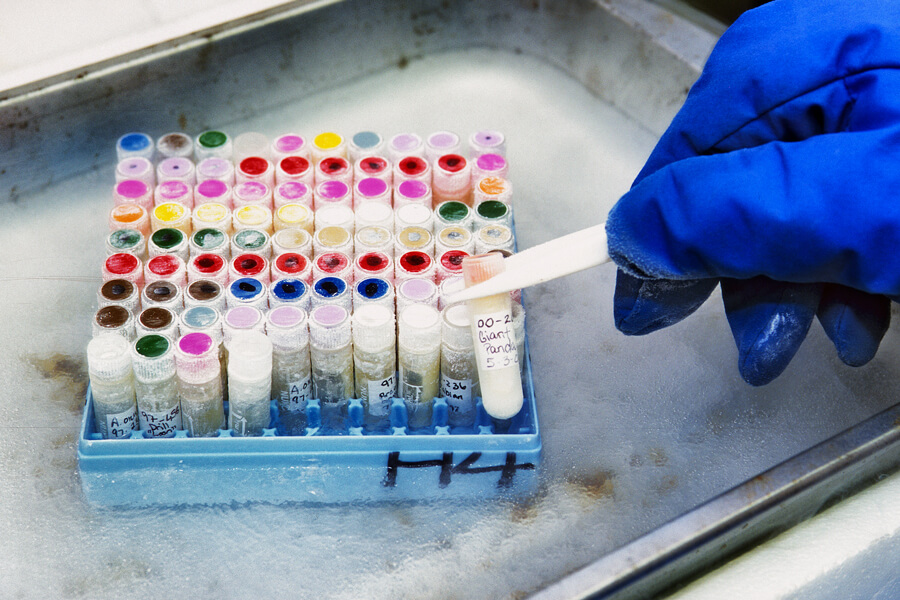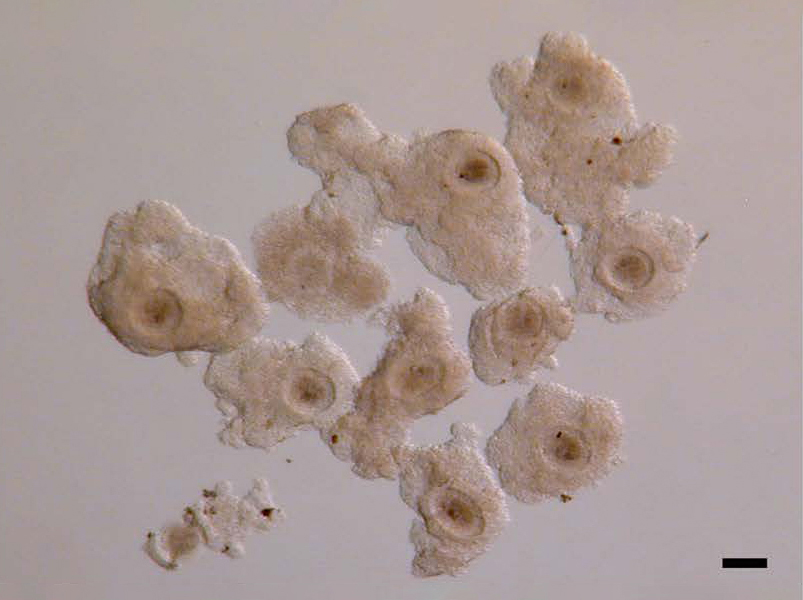The last male northern white rhinoceros — his name was Sudan — died in March, leaving only two members of the subspecies behind: his daughter and granddaughter.
In the past, those stark facts would have spelled the end. But researchers at the San Diego Zoo’s Institute for Conservation Research — home to a frosty menagerie known as the Frozen Zoo — are working to give northern white rhinos a second chance. Since 1975, the institute has been collecting tissues from creatures, some endangered and some not, then growing the cells in the lab and preserving them at a chilly 321 degrees below zero Fahrenheit.
Zoos already use reproductive technologies such as in vitro fertilization for animals like gorillas, and artificial insemination for pandas. (Elsewhere, scientists are considering the merits of resurrecting extinct species such as the woolly mammoth and the passenger pigeon, though they’d have to use ancient DNA for that.) The Frozen Zoo has used its preserved sperm to create pheasant chicks, for example, and has gone as far as making embryos of cheetahs and fertilizing the eggs of southern white rhinoceroses.
Now its zookeepers hope that their dozen northern white rhino samples will become parents to a new generation in a different way: using stem-cell technology to turn preserved white rhino skin tissue into eggs and sperm.
The institute’s research goes beyond baby-making. Scientists there are working on methods to genetically identify meat from primates and duiker antelopes that have been illegally hunted. And in the future, they might use its collection to restore genetic diversity to endangered black-footed ferrets.
Broadening such efforts will take a global network of frozen zoos, write Oliver Ryder, the institute’s director of conservation genetics, and coauthor Manabu Onuma in the Annual Review of Animal Biosciences.
Ryder, who has been at the institute since it started, spoke with Knowable about the past, present and future of the Frozen Zoo. This conversation has been edited for length and clarity.
How did the Frozen Zoo begin?
We like to say the Frozen Zoo started when Dr. Kurt Benirschke came to the San Diego Zoo in 1975. Dr. Benirschke, who died in 2018, was interested in fertility and chromosomes. The technology to freeze cells and thaw them with restored function was still fairly new — it was first done with sperm in 1949 — but it opened up all kinds of opportunities. Having cell cultures to freeze, revive and grow more cells from, to look at chromosomes, was a really significant advance. Other scientists were doing this, but mostly in human medical research.
Dr. Benirschke was particularly interested in describing the chromosomes of diverse species. We took every opportunity that came up to collect a new species. There was a confidence that cells being banked would find uses far beyond what could be envisioned at the time.

At the Frozen Zoo, vials like these are the “animal enclosures.” Each contains sperm, or cells grown from a bit of animal skin or other tissue. They’re stored in liquid nitrogen at -321 degrees Fahrenheit and thawed when researchers want to use them.
CREDIT: SAN DIEGO ZOO GLOBAL
You also joined the Frozen Zoo, then called the Center for Reproduction of Endangered Species, in 1975. Do you remember the first animal you ever preserved cells from?
It was a Chinese muntjac, a barking deer. There was one that had a fracture and was repaired by orthopedic surgeons. They had to catch it and anesthetize it to change the cast, so I was able to come and do a skin biopsy.
The barking deer are interesting. There are both Chinese and Indian muntjacs, and the average person would be challenged to identify much difference between the two. Yet while the Chinese muntjac has 46 chromosomes, the Indian muntjac has the lowest known chromosome number in mammals: six in females, seven in males.
Wow!
Those of us interested in evolution, in how chromosomes evolved and how species are formed, were challenged by this “scandal,” as it was called. We now know that the chromosomes fused together in the ancestor of the Indian muntjac. What triggered that fusion isn’t known, but it must have taken place. A hybrid between the two was made in China; it had three big chromosomes and 23 little ones. It lived, but it couldn’t reproduce.
Early research at the Frozen Zoo focused on chromosomes. Though similar in appearance, Chinese and Indian muntjacs (also known as barking deer) have very different chromosome sets. Studies indicate that at some point in the past, the many small chromosomes still seen in Chinese muntjacs fused together to create the smaller set of large chromosomes found in the Indian muntjac.
CREDIT: C.R. AUSTIN & R.V. SHORT / MOLECULAR REPRODUCTION & DEVELOPMENT 1982
Another time, in 1980, I remember the pathologist telling me, “We’ve got a really interesting and rare animal in the necropsy [animal autopsy] room. You should get a sample.” And it was a northern white rhinoceros. That sample provided the material, years later, to do the first genetics study comparing northern and southern white rhinoceroses.
Now fast-forward to the present, and we have an ambitious genetic rescue project to prevent the extinction of the northern white rhinoceros, and it depends on the 12 northern white rhino cultures that we’ve banked over the years.
How can you use those cells to save the northern white rhino?
From those banked skin samples, we have frozen cells called fibroblasts. We thaw those cultures, and turn them into what are called induced pluripotent stem cells. These can, theoretically, turn into nearly any kind of cell in the body: They can make beating heart cells, they can make nerve cells.
Our eventual goal is to turn the stem cells into eggs and sperm, so that we can make embryos. In other words, those fibroblasts will be able to have babies.
This has been done in lab mice, but no other species yet. So far, we’ve got induced pluripotent stem cells from northern white rhinos. Now we’re refining methods to confirm they are pluripotent. There’s another team that’s working with a herd of female southern white rhinos that we plan to use as surrogates. We’re at least a decade away from a baby northern white rhino, but we’re making progress.
If you would have asked me in 1985, can you take a cell from the Frozen Zoo and turn it into an animal, I would have said no. Now we’re planning to do it in the lab here.

Fresh oocytes (eggs) collected from a southern white rhinoceros. To help bring back the northern white rhino from the brink of extinction, Frozen Zoo researchers hope to turn preserved northern white rhino skin cells into eggs and sperm and implant embryos into a southern white rhino mom.




